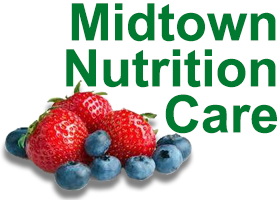STRATEGIES FOR A HEALTHY NEW YEAR
PLAN/PRE-PACK HEALTHY SNACKS
If you’re going to be out and about for most of the day, or have a long day in an office where food choices are limited, bringing along healthy snacks, like dried fruit and nuts, a protein bar with at least 7-10 gm of protein, or a small bag of whole grain crackers, can help bridge the gap between meals.
REDUCE GRAZING ON SNACKS IN THE EVENING
Mindlessly snacking after dinner, especially while watching TV, often contributes to excessive intake of sodium, refined sugar, saturated fat and calories. If you do choose to have a snack, eat it away from the TV. Another strategy is to set a cut-off time after which you will not eat until the next day.
BE CAREFUL WITH YOUR CONDIMENTS
Condiments like mayonnaise, creamy salad dressings, butter and cream cheese, when used in excess, add a lot of saturated fat and calories to your meals. A typical portion of dressing is 1 oz (2 tablespoons), which can be around 170 calories, so use less to start with, and add more in small increments as needed.
USE LOW CALORIE ADD-ONS TO ADD BULK TO YOUR MEALS
Start a meal with a cup of soup like minestrone or bean/lentil variety, or add a big salad, or 1-2 cups of non-starchy vegetables to your plate. This can help you feel full while also obtaining more nutrients with fewer calories.
PORTION CONTROL TIPS WHEN DINING OUT
We often feel like we need to clean our plate, especially when eating in restaurants. However, many restaurants serve large portions. Eat slowly to avoid getting overstuffed. If you see that your meal portion is too big you can ask for a takeout container and take home any extras to use as a meal for another day.
EXERCISE
Exercise can make you stronger and can help lower stress levels. Even 20-30 extra minutes of movement every day can help improve overall health. Walking is a great choice since no special equipment or gym membership is needed.
